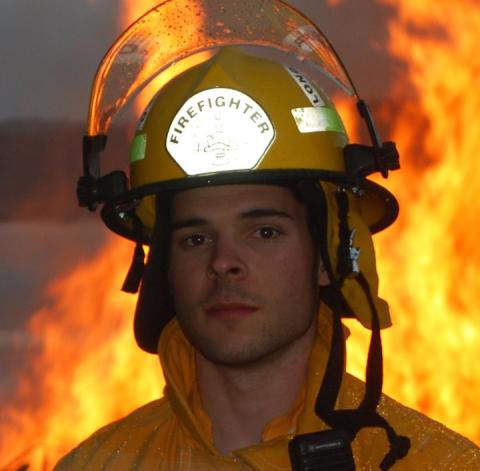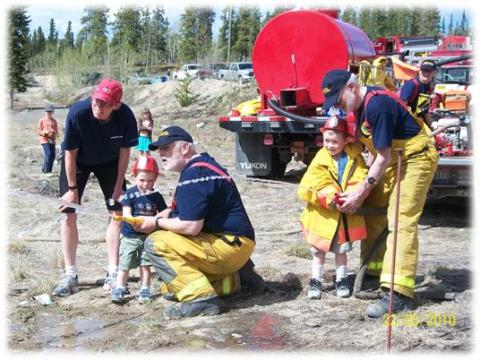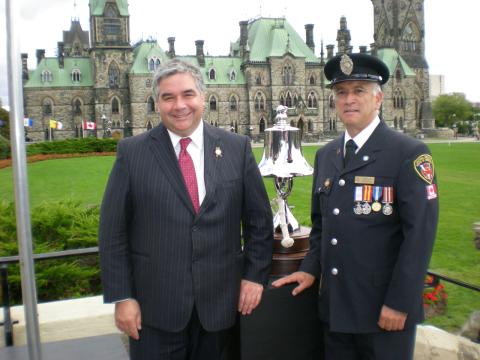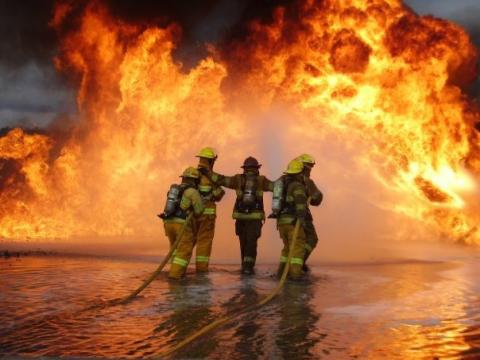
That’s, volunteer, as in unpaid — these brave men and women risk their lives every time an alarm is sounded for very little or no remuneration.
“We do what we do because in many cases, the community needs protection,” Martin Bell, Nova-Scotia-based president of the Canadian Volunteer Fire Services Association, tells Samaritanmag. “The local municipality doesn’t necessarily have the funds to have a career fire department to provide the service that they need.”
Bell estimates that there are approximately 3500 volunteer fire stations located across Canada, with volunteers often donating upwards of 25 hours of personal time a month to ensure public safety.
They’re also responsible for purchasing their own equipment and custom-built uniform, which could add up to $6000.
“It usually costs about $2500 to equip one firefighter with a helmet, protective burn equipment, gloves, your bunker suit, which is usually heat-and-fire retardant — and that suit is normally built to the size of individual to meet their height, weight and waistline,” Bell explains. “So it’s not like you can order a couple of suits and hang them in the fire station for anyone to use.”
Bell says there’s also the breathing apparatus that you would don with a tank and mask in addition to your suit. “That would very well add another $3500,” he explains.
Volunteers undergo the same amount of rigorous training, usually 200 hours worth, before they’re ready to go out on calls.

He also says it’s not unusual to for volunteers to dip into their own pockets to keep the stations in small municipalities running.
“Sometimes during the winter months, members of the community or that fire department would chip in to fill the oil tank in that station to make sure that the equipment doesn’t freeze,’ Bell asserts.
Bell says that are three types of fire stations in Canada: career, composite and volunteer. Career fire stations are fully staffed with paid individuals; composite is centered on a few paid staffers and supplemented with volunteers; and, of course, the latter consists solely of volunteers.
Municipalities fund their own fire stations and firefighters, and Bell explains that costs can be prohibitive. “Once you become a career (full-time) firefighter, it automatically puts the municipality into a different liability class,” he concedes.
In some composite station cases, the municipality employs the fire chief because of the chief’s changing role and insurance complexities, while volunteers man the rest of the station.
“The fire chief is more of an administrator as well as a fire ground commander,” says Bell. “The government, and Workman’s Compensation, and some of the provincial statutes, require a lot of paper work after every fire, either for insurance or safety needs, so the documentation has to be very accurate and submitted in a timely fashion.
“So municipalities will hire a career chief, and they’re responsible to make sure that all this reporting is done on time, and be responsible for the selection of the training criteria for that department.”

“When an alarm comes in, they will dispatch a paid crew, and if it’s a minor fire, that’s the last you’ll hear of it,” he says. “If it becomes a working fire, then they’ll put out a second alarm, which will summon volunteers to come to the station, and they’ll don their equipment and drive out with extra trucks and work beside the career firefighters because you have a manpower need or a human resource need that exceeds the normal capacity.”
As far as procuring and updating equipment, Bell says its often “the pride of the community that ensure you get a little better truck, a little better training and a little better equipment,” either through donations or fundraising.
Bell, a professional paramedic and 30-year veteran who started his volunteer firefighting career at the age of 16, says the biggest challenges today facing firefighting departments are volunteer retention and declining enrollment.
“I’d say that 20 years from now, many municipalities will be looking at a very serious situation, or a much increased budget for moving towards career firefighters.”
He says it’s still easy to volunteer: just show up at a station and ask. There will be forms to fill out and interviews that will be conducted — and volunteers won’t necessarily need to go out on call and risk their lives.
“They could be bookkeeping or doing some banking, whatever else is needed to keep that fire department rolling,” Bell explains.
Bell would like to see some funding changes implemented, specifically the federal and/or provincial governments “to accept some responsibility for the cost to provide that service within the community,” arguing that he would define volunteer firefighters responding to disasters such as floods and other community crises as “a civic emergency response rather than a fire community response.”
He’d also like to see some federal or provincial compensation to the families of those volunteers who have lost their lives in the line of duty.
“Often those surviving families get little or nothing in the way of compensation,” he states. “They might get as little as $20,000 or $30,000 in their insurance policy, which is barely enough to feed a family for a year, let alone the rest of their lives.”
At times a thankless job, Bell says the reason volunteer firefighters engage in the profession is a sense of pride in their community. “They’re hoping to give back in some way,” he says.
